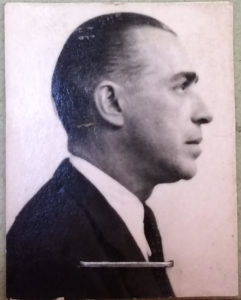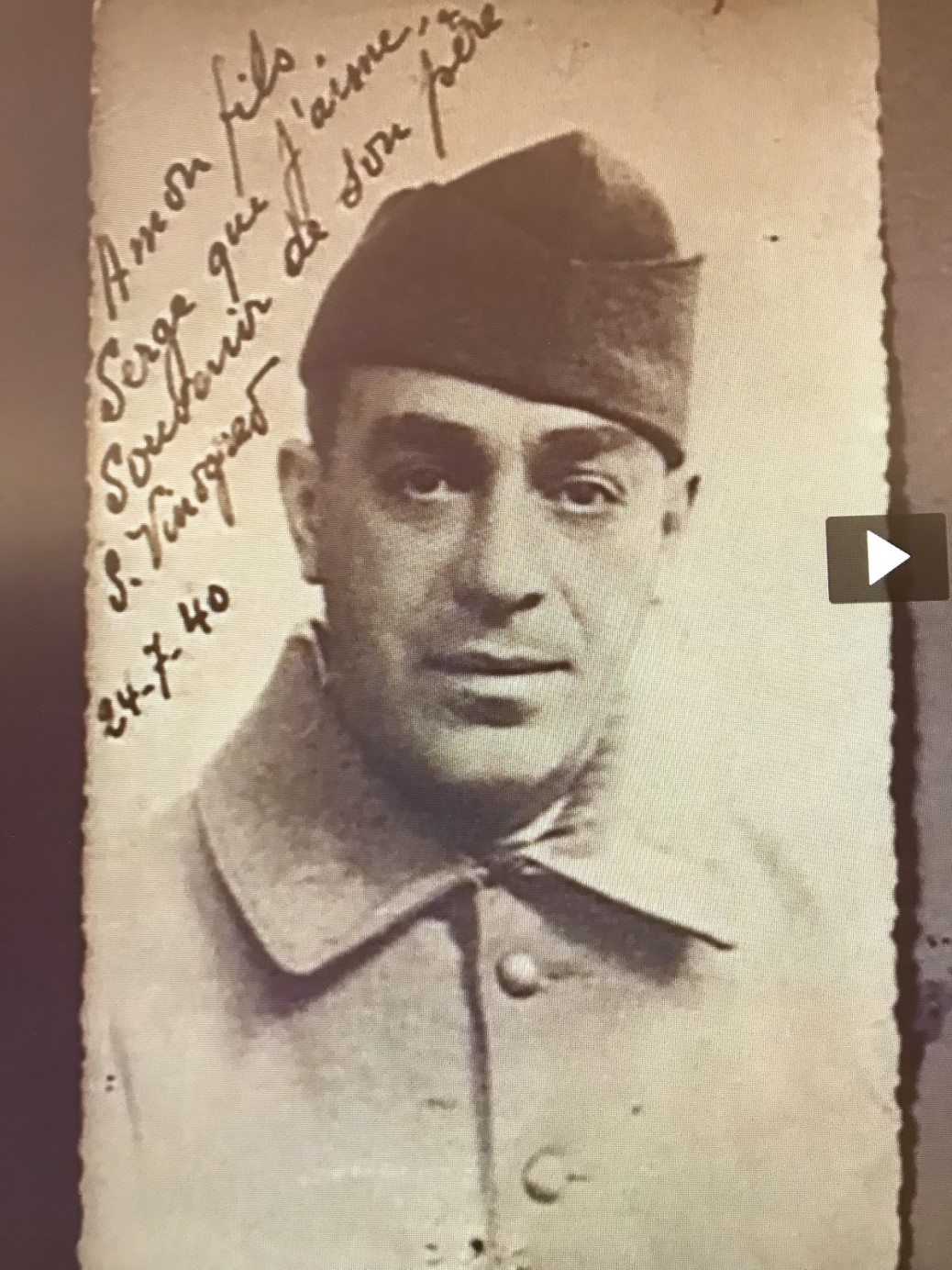Samuel VINOGRAD
Samuel Vinograd was born on December 24, 1894 (1896 in a few documents) near the village of Wiązowna, near Warsaw in Poland. At the age of 3, he emigrated with his family to Pavillons-sous-Bois, a town in the Paris suburbs, where he lived until 1939. He then moved to Paris itself, to an apartment at 11, rue Martel, in the 10th district.
In Paris, he met Bilma, known as Fleurette, a French woman of Jewish descent, who became his wife. The couple had three children: a son, Serge (who gave us a great deal of information about Samuel) and two daughters, Balbine and Fanny. The family owned and worked in the haberdashery trade. Samuel’s wife was a seamstress.
During the war
When war broke out, or more specifically when Nazi Germany attacked France, Samuel joined the French army and went into combat, probably somewhere to the east of Paris. After the ceasefire, he returned to Paris, even though it was by then occupied by the Germans.
Before the war, he had never come across any anti-Semitism, so when it came to registering himself as a Jew, he did not hesitate. He thought he would have fewer problems if he told the truth. By contrast, many members of the Jewish community preferred not to reveal their true identity at the beginning of the war, foreseeing what might happen to them. His son remarked that Samuel was a lifelong optimist. His wife, on the other hand, was against the idea and tried to persuade him not to register as a Jew.
In 1940, his daughter Balbine married a German soldier named Gutmacher. Samuel procured false papers for them so that they could escape from Paris. The second daughter, Fanny, was sent to stay with a French family, where she could live in hiding. The son, Serge, headed in a very different direction and became involved in the French resistance movement. In 1942, Samuel was arrested for the first time by the French police, but his wife bribed the inspector to buy Samuel some time. This gave him an opportunity to fetch a pack of cigarettes, and allowed him to escape.
He came back to Paris a little later, but he was stopped again, this time because he was Jewish, and placed under arrest by the Court of Justice. His wife persuaded the guards to let her see him. Probably thanks to her, he was released a few days later.
In 1943, he saw his son Serge for the last time.
After that, the family split up and none of them knew exactly where the others were.
Samuel wrote to his son Serge, but he had no idea where his wife was hiding.
 He was arrested in Drancy a few days before the convoy was scheduled to leave. He knew then what was going to happen to him and he suffered a mental breakdown.
He was arrested in Drancy a few days before the convoy was scheduled to leave. He knew then what was going to happen to him and he suffered a mental breakdown.
He mentions this in his final letters to his son, Serge. His very last letter was to his wife. He wrote it on the train from Drancy to the German border and threw it out of a slot in the cattle car. This was the last time anyone heard from him.
He died at the age of 50 during the Death March from the Auschwitz-Birkenau camp.
Many of his family members were also deported.
After the war, his son returned to school in Paris and was reunited with his mother and sisters.
This biography was written during the winter semester 2018/2019 at the French High School in Warsaw by two 12th grade students, Piotr Kisielewski and Pierre Alexandre Chauffour, under the guidance of their French and Polish teachers, Valerie Kuhn and Barbara Subko.


 Français
Français Polski
Polski











l’épouse de Samuel se prénommait Blima (Fleurette) WIENERBETT, née à Paris, domiciliée 3, rue Sainte-Croix de la Bretonnerie (Paris IV)
Ses parents : Hersz Vinograd et Fajga Bressler ; lui avait pour 1er prénom Szmul, second prénom Joseph.
Selon un doc traduit du polonais le 22 sept 1943, Il vivait 45/2171 AA rue Stawki, 5e arrondissement (Varsovie?), avec ses parents, condition : bourgeoise. le doc original daterait de 1921. (à quelle époque fait-il référence?)
Au moment du mariage, à la mairie du IVe, le 11 mai 1919, il est présenté comme casquettier, domicilié 3 rue du Trésor ( Paris IVe) est prénommé “Samuel”.
Naturalisé le 11 novembre 1926, soit longtemps après son mariage et la naissance de ses 2 premiers enfants. (1920 et 1924). Sa femme, qui avait perdu sa nationalité française en se mariant avec un étranger, est réintégrée dans la nationalité française le même jour. (JO du 23 nov 1926)
domicilié 11 rue Martel Paris X (acte de décès transcrit dans cette mairie)
Samuel est arrêté à son domicile, le 3 juillet 1944 et interné le même jour à Drancy, selon un doc, -ou “arrêté le 3 juillet 1944 à 7 h par policiers français. Huit jours de détention au quai de l”Horloge (la Préfecture de police). Transfert à Drancy (demande de régularisation état-civil d’un “non rentré”, remplie par son fils? en 1947). Le certificat mentionne un internement à Drancy le 3 juillet. N° Drancy : 24.699
Témoins de l’arrestation : la concierge et les locataires de l’immeuble (selon déclaration en 1953)
La demande d’attribution du titre de déporté politique le désigne comme “représentant”.
( archives 21 P 548 168 Caen)
Phillippe Henriot est assassiné le 28 juin 1944